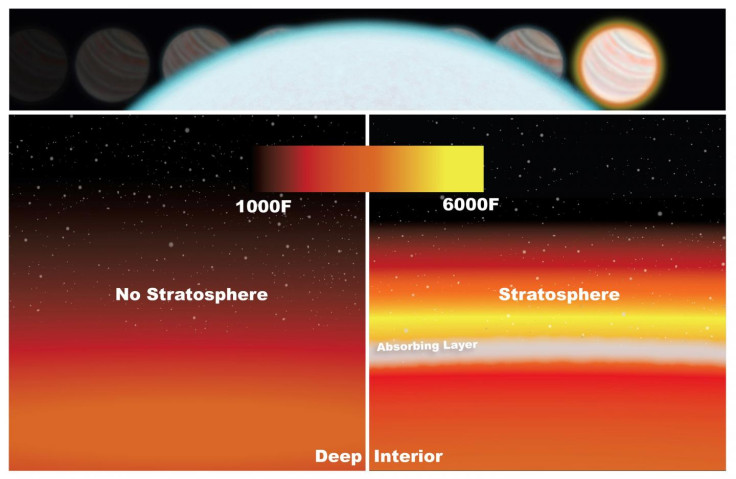Hubble detects sunscreen layer on distant exoplanet for the first time

A layer of atmosphere that blocks ultraviolet light and visible light has been detected for the first time on a hot, massive exoplanet.
The discovery by the Hubble Space telescope also demonstrated the presence of titanium oxide and water in the atmosphere of WASP-33b, an exoplanet four to five times the size of Jupiter.
Analysis of the emission spectra showed the presence of water in the stratosphere at about 6,000 degrees Fahrenheit. The rest of the emission was traced to a gas lower in the atmosphere that was at a temperature about 3,000 degrees Fahrenheit.
The team from Nasa also presented the first observational evidence that the planet's atmosphere contains titanium oxide, a strong absorber of visible and ultraviolet radiation and capable of remaining in gaseous form in hot conditions.
The stratosphere layer of a planet's atmosphere usually includes molecules that absorb ultraviolet and visible light, acting as a kind of "sunscreen" for the planet it surrounds.
Scientists were unsure of finding these molecules in the atmospheres of large, extremely hot planets in other star systems. Most of the molecules will boil away into space at such temperature.
These findings appear in the Astrophysical Journal.
"At these temperatures, we don't necessarily expect to find an atmosphere that has molecules that can lead to these multilayered structures," said Avi Mandell, a planetary scientist at Nasa's Goddard Space Flight Center in Greenbelt, Md, and a co-author of the study.
On Earth, the stratosphere sits above the turbulent troposphere which is warmer at the bottom.
The stratosphere sees a temperature inversion caused by ozone absorbing the sun's ultraviolet radiation and warming the stratosphere.
Jupiter and Saturn
Similar temperature inversions occur on Jupiter and Saturn too but are caused by hydrocarbons. Neither ozone nor hydrocarbons can survive at the high temperatures of most known exoplanets.
A temperature inversion and presence of titanium oxide confirms the presence of a stratosphere on WASP.
"These two lines of evidence together make a very convincing case that we have detected a stratosphere on an exoplanet," said Korey Haynes, lead author of the study.
With Drake Deming from the University of Maryland in College Park, the researchers analysed observations made with Hubble's Wide Field Camera 3 to arrive at their conclusions.
The camera can capture a spectrum of the near-infrared region where the signature for water appears.
© Copyright IBTimes 2025. All rights reserved.





















